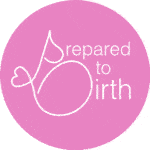Epidurals – Benefits and Risks
There is a big difference between COPING with the intensity of labour and SUFFERING.
We never want a mum to get to a level of suffering during her labour. Birth should be a positive experience for the mother, baby and her birth partner.
Epidurals can be a good option for women if they are experiencing long labours, feeling exhausted, panicked or extremely tense. This form of pain relief can allow mum to relax and get some much needed rest.
As with all interventions it is important to know the risks and benefits so that you can make informed decisions about what is right for you and your baby. There are also some important questions you can ask your care providers during pregnancy to help with your decision about epidurals, spinal blocks or combined spinal epidural blocks. It is also important to know the difference between these types of pain relief options.
No two births are the same and real-life experiences can provide great insight. Did you have an epidural? Did you love it or did you experience side effects?
QUESTIONS FOR YOU AND YOUR PARTNER TO ASK YOUR CARE PROVIDERS BEFORE YOU GO INTO LABOUR
✔Is it possible to have a low-dose epidural so you can still feel the sensations of your contractions and know when to push?
✔Is it possible to get into an upright, forward and open position (like the one pictured) so that you can allow gravity to assist your baby to descend and allow your cervix to open more easily?
It is also important to prepare yourself with other coping tools in case you labour very quickly and an epi is not an option, the epi is not effective or the anaesthetist is not immediately available.
Many people believe Hypnobirth is about having a natural, drug-free birth. This is incorrect. Hypnobirth is about doing all your research with your birth partner, knowing your options and being confident enough to advocate for yourself when it comes to you and your baby. It also gives you coping tools such as breathing, positioning, self-hypnosis, acupuncture and more to help you cope with the sensations of labour – and yes these techniques can all still be used with an epidural.
BENEFITS
✔Allows mum to sleep and rest if labour is long
✔Usually gives total pain relief
✔Takes about 10-15 mins to start working
✔Does not make you feel drowsy
CONCERNS
❌May only work on one side
❌May need to wait for the anaesthetist
❌Can create excessive itching
❌Increased monitoring of you and your baby
❌Reduced mobility
❌Urinary catheter for loss of bladder sensation
❌May feel nauseous or shivery
❌Very small number may experience severe headaches for a number of days or weeks if the dura is punctured
❌Nerve damage
❌Doubled risk of an instrumental delivery
❌If given too early can affect baby’s positioning or rate of descent
❌Fever
❌Can stall or stop labour
❌Lower blood pressure meaning mum may require IV fluids to bring it back to normal
❌Extended numbing lasting for days or weeks
❌Baby may need oxygen when born
❌Having one before active labour more than doubles the chance of having a caesarean (if given during active phase does not increase rates of caesarean)
Always do your research. Take an independent childbirth education class and look at further research by people such as Dr  Sarah Buckley and Evidence Based Birth.
Sarah Buckley and Evidence Based Birth.

